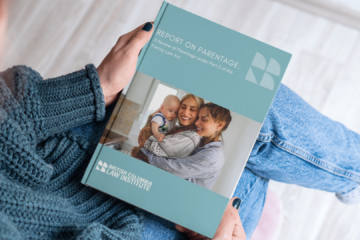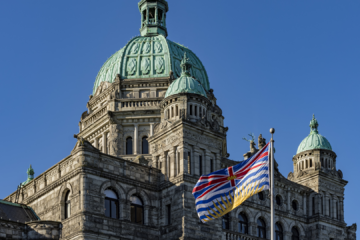Federal Election 2019: Identifying the Seniors’ Policy Issues
October 21, 2019
BY Krista James
Co-written with Lorraine Wong
This year, Canada’s political parties have announced many policies on their platforms that are particularly relevant to seniors. Some issues, such as pensions, are more clearly seniors’ policy topics; other policies that do not directly target seniors could still have a significant impact on older people. For example, expenditures that would open up a greater number of affordable childcare spots could improve quality of life for seniors. As we discussed in the 2017 Older Women’s Dialogue Project (OWDP) report, older women often immigrate to Canada in order to support their adult children with childcare.
Three policy issues affecting older adults that have garnered some attention during the current federal election campaign are:
- Funding for prescription medication;
- Old Age Security (“OAS”) reform; and
- Climate change action.
In this post, we provide some basic information on these three topics with links for further reading.
Health Care Funding
Prescription medication is a significant cost for many seniors in Canada. Prescription medication costs more in Canada than in any other Organisation for Economic Co-operation and Development (OECD) countries, and Canadians spend more on prescription medication than people living in other OECD countries—other than the United States and Switzerland[ 1]. In 2018, Canadians spent $34 billion on prescription medicines [2]. In their 2018 report on Drug Use among Seniors in Canada, the Canadian Institute for Health Information reported that on average seniors use prescription drugs more than any other age group, and that approximately 1 in 4 Canadian seniors were prescribed 10 or more drugs in 2016.
However, aging and frailty are not limited to the 65-plus. Quality of life as we age can be affected negatively by lack of access to critical medication, even during their younger years. Our consultations with older people suggest that many social, environmental and economic factors can impact aging—for example, lower-income women may experience health conditions often associated with aging, such as diabetes and respiratory issues, long before they turn 65. This study by the US Centre on Society and Health confirms that income and wealth are linked to health and life expectancy. Universal Pharmacare across the life-course is thus a critical seniors policy issue.
The 2019 final report of the Advisory Council on the Implementation of National Pharmacare states that about 7.5 million Canadians (or one in five Canadians) either do not have prescription drug insurance or have inadequate insurance to cover the cost of their medication [3]. In 2018, the estimated proportion of Canadian seniors aged 65 to 74 that reported private drug coverage was about 40%. The report notes that every major study to date on Canada’s health care system has concluded that “some form of [pharmacare] would result in better health for Canadians and lower costs for families, employers and governments.”
One of the OWDP tool development groups identified the high cost of prescription medication and inadequate public funding for medication across their lives as one of the most pressing barriers to their quality of life. One woman said, “The medication for Parkinson’s is very expensive. [In order] to not spend so much on medicine, I take two pills a day instead of the three that I’m required to take.” The OWDP Latin American women’s group developed a video documentary explaining how lack of money to pay for prescription medication had negatively impacted their lives. Our second report on the OWDP identifies the creation of a national Pharmacare program as a key strategy for ensuring all low-income seniors are able to afford the medication they need throughout their lives.
Currently, Canada is the only country where publicly funded drug insurance plans vary across provincial and territorial jurisdiction. Quebec is the only jurisdiction with universal drug coverage—insurance is mandatory but low-income seniors are exempted from the requirement to pay premiums—although plans are offered for seniors by all provinces, and Indigenous people may have access to coverage through various federal government programs [4]. For more information on public drug benefit programs in each jurisdiction, visit the government website.
Old Age Security (OAS)
The number of seniors in Canada is growing as a result of many factors including increases in life expectancy. According to Statistics Canada, there are over 6.5 million of persons aged 65 and older as of July 2019. Public spending on pensions impacts many of us—now, or in the future.
The objective of the OAS program is to provide a minimum income for seniors. The OAS program includes:
- The OAS pension, which is paid monthly to all seniors aged 65 and older who meet the residence requirements.
- The Guaranteed Income Supplement (GIS), which is paid additional monthly to all seniors who are receiving OAS and meet low income thresholds.
- The Allowance, which is paid monthly for all low-income seniors aged 60 to 64 whose spouse or common-law partner receives GIS.
- The Allowance for the Survivor, which is paid monthly to low-income seniors aged 60 to 64 who are living in Canada, and whose spouse or common-law partner has died.
For seniors who have resided in Canada for at least 40 years after they turned age 18, they may receive a full basic OAS pension. For seniors who have resided in Canada at least 10 years after age 18, they may receive a partial OAS pension. For low-income seniors who meet all the eligibility criteria, the OAS can significantly improve quality of life. According to Employment and Social Development Canada (“ESDC”) in June 2019, about 500,000 low-income single seniors (or about 8% of seniors) will have benefitted from the maximum additional annual amount of $2,097.00 in OAS/ GIS benefits in 2019. Also, one in three seniors who receive OAS pension also receive GIS. However, as noted in our second OWDP report, older immigrants who come to Canada later in life may not be entitled to much, if any, public pension. In our 2017 report we indicate that the OAS and GIS eligibility criteria should be reviewed with respect to access for older immigrant women who have no financial support. Often these women contributed much to the economy after immigration, providing childcare and housework within their families which enabled other family members to maintain employment outside the women. However, fiscal spending policy treats these women as a social burden.
OAS benefit amounts increase consistent with increases in the Consumer Price Index (for example, by 1.0% for the October to December 2019 quarter). The current government recently increased the GIS for single seniors by 10%. Over the years, many studies and reports have highlighted the inadequacy of the OAS [5]. Our 2017 OWDP identified enhancing the OAS and GIS as a critical strategy for improving quality of life for seniors who are living in poverty.
For more information on the current OAS program, visit the government website on programs and services for seniors and the government website on OAS Toolkit.
Climate Change
Climate change is one of the key ballot issues this year. Student activism has helped propel the climate emergency into headlines. However, youth are not the only generation that cares about, or is impacted significantly by, lack of action to address climate change. Although children stand to live a greater part of their lives on a compromised planet, older people are particularly vulnerable to suffering the negative effects of climate change, especially if they have existing health conditions.
As this story by the United States Centre for Climate and Energy Solutions explains, high temperatures put greater strain on older bodies, which may not be able to effectively thermoregulate. Older people can easily overheat, and reduced mobility can make it harder for them to access cooler locations. Hot weather and poor air quality can increase the risk of health complications for people with cardiovascular and respiratory issues that are more common in older adults. In contrast, extremely cold weather with heavy snowfall can isolate frail seniors who are not able to shovel the sidewalk. Extreme weather events can put seniors at great risk. One source reports that, “Nearly half of the individuals who died during Hurricane Katrina in 2005 were 75 or older. When Hurricane Sandy hit New York in 2012, almost half of those who died were over 65.” This excellent article by American Nurse Today pulls together many academic sources to identify climate change risks for older people as well as strategies for supporting frail older people in your community.
Health care and pensions are two policy issues that will clearly have a significant impact on older people living in Canada. However, other issues that many would not consider seniors’ policy issues can have a huge impact on quality of life for older adults, particularly those who have vulnerability linked to health, poverty and other social-economic reasons.
We hope you go out and vote today, and find that these sources support your understanding of a few critical seniors’ policy issues.
[1] Canada, Advisory Council on the Implementation of National Pharmacare, “A Prescription for Canada: Achieving Pharmacare for All” (2019) online: www.canada.ca/en/health-canada/corporate/about-health-canada/public-engagement/external-advisory-bodies/implementation-national-pharmacare/final-report.html#mess [A Prescription for Canada].
[2] Ibid.
[3] National agencies currently use the guideline of 5.0% of household income as a health indicator as to whether out of pocket expenditure on medication may be considered high.
[4] A Prescription for Canada, supra note 1.
[5] See e.g. Monica Townson, “A Stronger Foundation: Pension Reform and Old Age Security” (November 2009), online: Canadian Centre for Policy Alternatives; IRPP Task Force on Aging, “Designing a National Seniors Strategy for Canada” (7 October 2015) at 12, online: Institute for Research on Public Policy [IRPP]; Canada, Parliament, Senate, Special Senate Committee on Aging, Canada’s Aging Population: Seizing the Opportunity (April 2009) at 101 “Recommendation 20”, online: www.parl.gc.ca/content/sen/committee/402/agei/rep/agingfinalreport-e.pdf.











































